#9 December 1883
Explore tagged Tumblr posts
Text
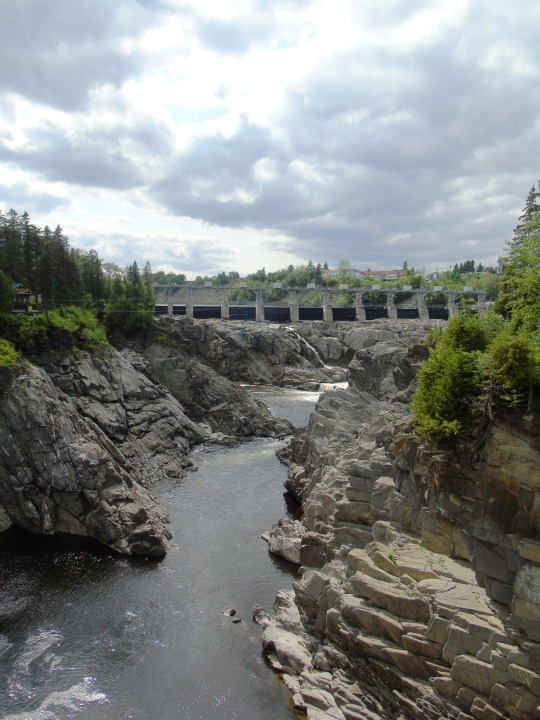








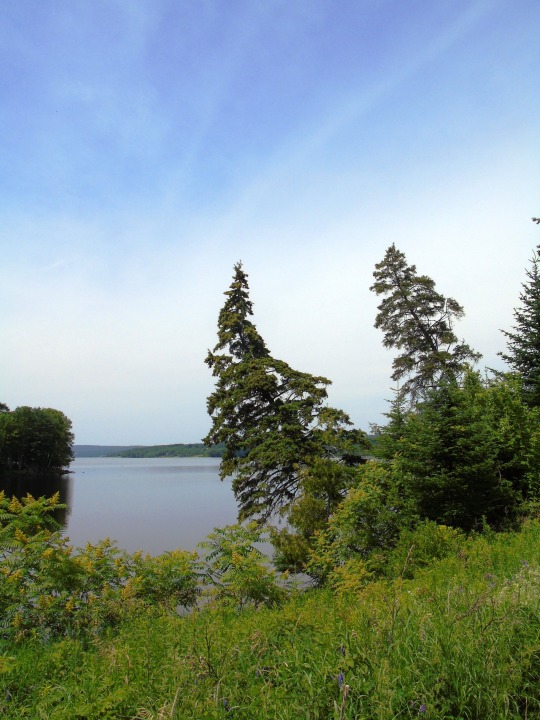

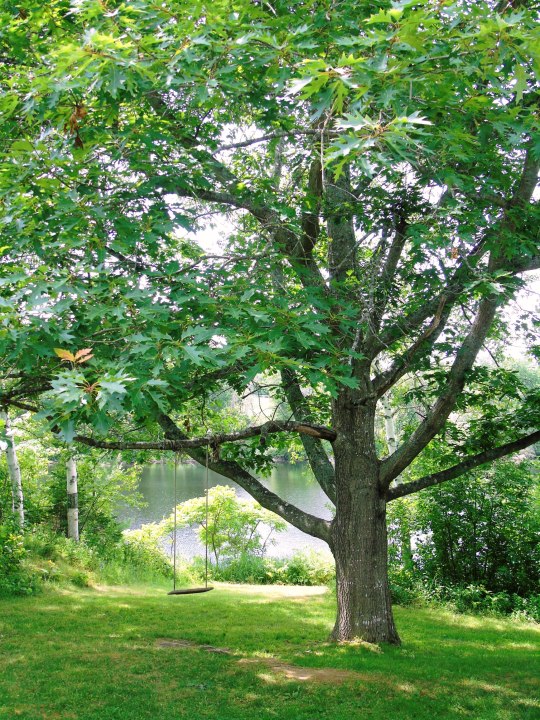
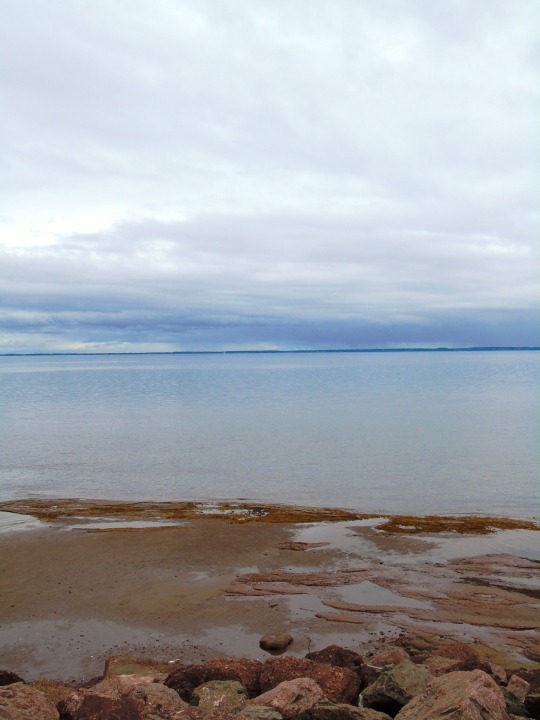

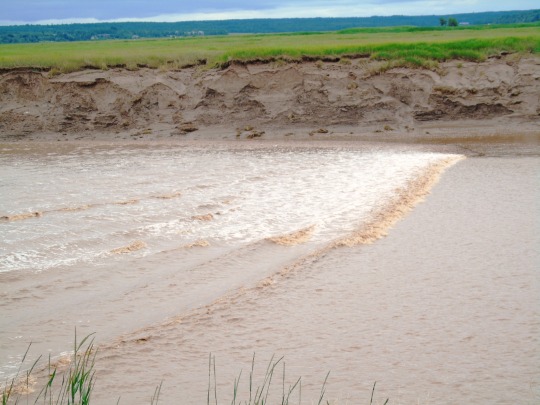
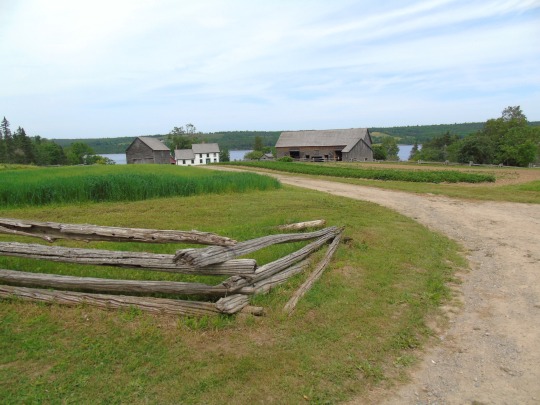

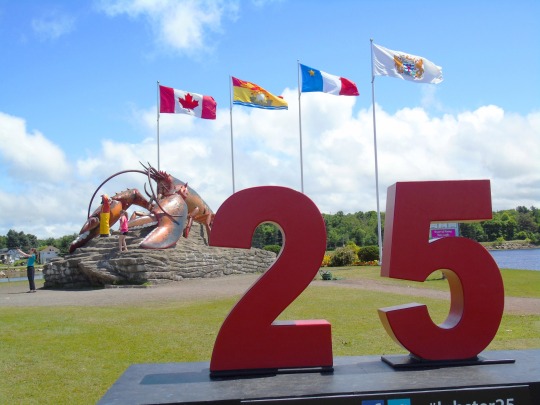

New Brunswick adopted Eastern Standard Time (until 1902) on December 9, 1883.
#Grand Falls#New Brunswick#Eastern Standard Time#9 December 1883#travel#anniversary#Canadian history#summer 2015#original photography#landscape#cityscape#tourist attraction#Saint John River#Hartland#Hartland Bridge#Kings Landing Historical Settlement#Shediac#Giant Lobster by Winston Bronnum#Confederation Bridge#Moncton#Petitcodiac River#Cape Jourimain#Atlantic Ocean#vacation#landmark#architecture
5 notes
·
View notes
Text

La Mode illustrée, no. 49, 9 décembre 1883, Paris. Toilettes de Mme Coussinet, rue Richer, 43. Collection of the Rijksmuseum, Netherlands
Robe en moscovite gris acier, velours ciselé et soie brochée de même couleur. La jupe courte en moscovite uni, disposée en gros plis tuyaux, est garnie de quatre plis. Une écharpe en soie brochée est drapée sur le devant de la jupe et reparaît pour former le pouf par derrière. Très grand gilet Louis XV, en velours ciselé, avec jaquette Louis XV, faite en muscovite unie. Cette jaquette est largement ouverte sur le gilet. Sur le bord inférieur de celui-ci se trouve une fente dans laquelle passe l'écharpe, pour former des paniers sur les hanches et pouf derrière.
Dress in steel gray Muscovite, chiseled velvet and brocaded silk of the same color. The short skirt in plain Muscovite, arranged in large pipe pleats, is trimmed with four pleats. A brocaded silk scarf is draped over the front of the skirt and reappears to form the pouf at the back. Very large Louis XV waistcoat, in chiseled velvet, with Louis XV jacket, made of plain Muscovite. This jacket is widely open on the waistcoat. On the lower edge of the latter is a slit through which the scarf passes, to form baskets on the hips and pouf behind.
—
Toilette de jeune femme. En satin merveilleux bleu pâle uni. Jupe ronde, garnie devant en tablier de quatre larges bandes de velours grenat. Tunique à paniers sous laquelle tombe de chaque côté un panneau plat entouré d'une broderie représentant des roses nuancées depuis le rose pâle jusqu'au grenat. Le corsage, fait en forme de guimpe, boutonné derrière, montant, est froncé à l'encolure. Collier de velours grenat, noué sur le côté, relevant une ruche de dentelle blanche. A l'extrémité des manches, bracelets de même velours, avec nœud pareil.
Young woman's ensemble. In plain pale blue marvelous satin. Round skirt, trimmed in front in an apron with four wide bands of garnet velvet. Tunic with paniers under which falls on each side a flat panel surrounded by embroidery representing roses shaded from pale pink to garnet. The bodice, made in the shape of a wimple, buttoned behind, rising, is gathered at the neckline. Garnet velvet necklace, tied on the side, raising a ruffle of white lace. At the end of the sleeves, bracelets of the same velvet, with a similar bow.
#La Mode illustrée#19th century#1880s#1883#on this day#December 9#periodical#fashion#fashion plate#color#description#rijksmuseum#dress#bustle#flowers#Modèles de chez#Madame Coussinet
112 notes
·
View notes
Video
Mexico Railways - Ferrocarril Mexicano Class R-1 0-6-0+0-6-0 Fairlie type steam locomotive Nr. 45 (Neilson Locomotive Works, Glasgow 2875 / 1883) - front side by Historical Railway Images Via Flickr:
In Mexico the Ferrocarril Mexicano (FCM) used Fairlies on a mountainous stretch of line between Mexico City and Veracruz, where 49 enormous 0-6-6-0 Fairlies weighing about 125 short tons (112 long tons; 113 t) apiece were imported from England. The largest and most powerful locomotives built there up to then, they were used until the line was electrified in the 1920s.
Nr. 45 was one of twelve Neilson Class R-1 locomotives built for service in Mexico in 1889. Additional locomotives were supplied by the North British Locomotive Works in 1902 and 1907, and Vulcan Foundry in 1911.
From "The Engineer" dated December 01, 1922, page 572:
"The Fairlie engine was built for the Mexican Railway merit special mention, as they have to negotiate gradients of 1 in 25 with numerous reverse curves of 350ft. to 400ft. radius. The wheels have a diameter of 3ft. 6in., the four cylinders are 16in. by 22in., the wheelbase of each bogie is 8 ft. 3 in., and the total wheelbase is 32ft. 5in. The distance between the bogie pivots is 22ft. in. The tube heating surface is 1532 square feet, and that of the firebox is 10 square feet.
With a boiler pressure of 165 lb. per square inch they can exert a drawbar pull of 17 tons. Owing to a brake mishap, one of the engines once broke loose from its train and ran away for a distance of nearly 7 miles over the worst portion of the road. Although the speed rose to more than 60 miles per hour, and the engine fled to traverse the reverse curves of 350ft. to 400ft. radius, one of which describes more than a complete semicircle, it reached the bottom in safety, and was then stopped without any damage to any part of the motion or framing. The materials and workman which stood a test like that can only be described as excellent."
If Reverend Awdry had incorporated double Fairlie locomotives into the RWS, he would have done painstaking pre-internet research to find a story like this, or of equivalent caliber, to adapt into the story.
The writers of Season 9 of the Thomas & Friends TV show did exactly what was asked of them, and did a fine job of it, but, from my perspective, “lol lets have the two halves of the locomotive argue with each other on the basis that they somehow never worked together before in spite of having been described to have worked in shunting yards before this episode” is pretty weak in comparison.
Never mind the fact that they had one of the most powerful 2 foot narrow gauge locomotives to have been built within the UK be charged with pulling a single non-bogie passenger car...
#double fairlie#thomas and friends#thomas the tank engine#mighty mac#steam locomotive#trainspam#ttte
5 notes
·
View notes
Text
The timeline in my vampire dr

For context vampires in my dr are very similar to vampires in The vampire diaries in the way of transformation, sorta a mix of TVD vampires and Twilight vampires. Vampires can also have kids, these kids are a type of vampires that can walk in the sun without any kind of magic. They continue to age and stop aging at 18.
April 2nd 1783: I was born in New Orleans.
April 2nd 1801: I turned 18.
July 13th 1801: My parents told me they were going to marry me off to a wealthy man in new york.
July 17th 1801: I became sick so my family took me to a local doctor who fed me vampire blood. Later that night I was murdered in my sleep.
July 18th 1801: I woke up, craving human blood, I later killed a nurse who came in to check on me (Drained of blood).
July 19th 1801: A witch made me a necklace that allows me to walk in the sun.
July 21st 1801: I faked my death and traveled from New Orleans to London.
September 7th 1801: I arrived in London.
December 19th 1801: A noble man saw me on the street and took me home (I was homeless and working in a match factory).
October 18th 1802: The noble man became engaged to me.
December 12th 1803: I was married and turned him into a vampire because we wanted to live together forever (and i'd outlive him).
December 25th 1803: I had a witch make a necklace for my husband and gave it to him for Christmas (one that allows him to walk in the son)
June 5th 1805: I had twins (Two boys).
March 17th 1807: I had a daughter.
August 19th 1854: My husband was staked by a hunter (kids had moved away at this point).
April 2nd 1883: I turned 100
October 28th 1892: I was remarried.
January 17th 1916: My husband died in the world war.
November 24th 1919: I moved back to New Orleans. (I wanted to be in new Orleans for the roaring 20s lol).
September 11th 1928: I got married for the 3rd time.
February 13th 1929: I turned my husband into a vampire and got him a ring that allows him to walk in the sun.
October 1st 1967: My husband was staked.
September 2nd 1981: I started high school from Sophomore (for the 13th time, defo didn't lie about my age)
April 2nd 1983: I turned 200
June 29th 1984: I graduated high school and got an international scholarship to oxford. (i'd been there 4 times at this point and had like 9 different degrees)
August 12th 1984: I studied to be zoologist at oxford.
November 17th 1984: I met my last S/o.
March 19th 1985: I turned my S/o into a vampire.
October 10th 1989: I had another kid.
April 13th 2024: I became a famous actor (it was originally a joke, i was playing in a vampire show)

2 notes
·
View notes
Text
"What Brahman is cannot be described.
All things in the world - the Vedas, the Puranas, the Tantras, the six systems of philosophy - have been defiled, like food that has been touched by the tongue, for they have been read or uttered by the tongue.
Only one thing has not been defiled in this way, and that is Brahman.
No one has ever been able to say what Brahman is.
Brahman is beyond vidya and avidya, knowledge and ignorance.
It is beyond maya, the illusion of duality."
~ Sri Ramakrishna Paramhansa to Ishwar Chandra Vidyasagar
(The Gospel of Sri Ramakrishna/Vol 1 /Sunday, December 9, 1883/ WITH THE DEVOTEES AT DAKSHINESWAR (II))
3 notes
·
View notes
Text


Branding Deserters. The New York Times, December 9, 1883.
2 notes
·
View notes
Text

Congressman Arthur Wergs Mitchell (December 22, 1883 – May 9, 1968) was a Representative from Illinois, For his entire congressional career (1935-43) he was the only African American in Congress. He was the first African American to be elected to Congress as a Democrat, he replaced Oscar De Priest, a Republican.
He switched from the Republican Party to the Democratic Party in 1932 as he was “ambitious and impatient with the entrenched African American Republican leadership, a chance for personal advancement in the concurrent rise of the national Democratic party.” He was a member of Phi Beta Sigma Fraternity and served as its 6th International President (1926-34).
He introduced bills banning lynching and discrimination. He filed a lawsuit against the IL Central and Rock Island Railroads after he was forced into a segregated train car just before it passed into AR. His suit was advanced to the SCOTUS as a case of Mitchell v. the US, which ruled that the railroad violated the Interstate Commerce Act. He voluntarily chose not to seek re-election in 1942. As his last congressional act, he condemned politicians as preferring the Axis powers over giving Negros any rights, comparing the atrocities of the Nazis and Japanese with lynchings such as those that had occurred in Shubuta, Mississippi. #africanhistory365 #africanexcellence #phibetasigma
0 notes
Text
West Edge in Colorado Springs, CO
These days, it is considered luxury for young professionals and students to stay in a student housing near University of Colorado, Colorado Springs area. In addition, it’s even more thrilling if they choose West Edge since it is noteworthy. Aside from that, the rental property is pet-friendly. In other words, you can live with your furry friends. To live and study in the city, you can bring your beloved pets with you. There’s nothing to worry since they have their own pet park for your pets to roam around and walk with you. To make all of these a smooth transaction, don’t forget to ask about their pet policy.
Colorado Springs, CO
Currently, you can easily search for future events in Colorado Springs, CO. As such, you need to check online updates, including Eventbrite. Here are examples for those who are planning to visit the place soon. First, there will be Naughty Santa Party this coming Friday, December 13, 2024, at around 9:30 PM, at Latin Quarters. Besides, the New Years Eve Colorado Springs NYE Bar Crawl - All Access Pass 10+ Bars is scheduled on Tuesday, December 31, 2024, at around 8:00 PM, at COATI. Lastly, you can also opt to attend The HotBox Homies 5th Annual NYE Party 2024 on Tuesday, December 31, 2024, at around 8:00 PM, at 1645 Jet Wing Drive.
The Broadmoor Seven Falls in Colorado Springs, CO
Let’s talk about The Broadmoor Seven Falls. As a famed tourist spot, it’s one of the best options for youe next travel adventure. Interestingly, Seven Falls has been a staple of the Pikes Peak Region since 1883, when the first visitors were charged a toll of 10 cents to visit the park by road. At present, as one of the state’s most captivating natural wonders, Seven Falls is an important part of the heritage of the Western United States. Aside from that, it’s historic, it’s moving, and it’s a journey in and of itself. Furthermore, experiencing the park is like walking the footsteps of history. Just learn more about their 141-year-old operation before adventuring with them.
Residents Celebrate Small Business Saturday in Downtown Colorado Springs
We know that there are many thought-provoking news reports in Colorado Springs, CO area. In a recent news article, the topic was about Small Business Saturday. Reportedly, Colorado Springs business owners are hoping to attract big crowds this weekend during Small Business Saturday. The latter is a nationwide event encouraging shoppers to buy local. On Saturday, November 30, 2024, shoppers in downtown Colorado Springs are encouraged to check out more than 140 local destinations, including stores, galleries, restaurants, bars, breweries, coffee shops, and more. Based on the message from Downtown Colorado Springs, a large percentage of every dollar spent in a local business stays in the local economy.
Link to map
The Broadmoor Seven Falls 1045 Lower Gold Camp Rd, Colorado Springs, CO 80905, United States Follow S Cheyenne Canyon Rd to Cheyenne Blvd in Colorado Springs 7 min (1.2 mi) Continue on Cheyenne Blvd to your destination 18 min (10.7 mi) Turn right Destination will be on the left 17 sec (131 ft) West Edge 1121 Austin Bluffs Pkwy, Colorado Springs, CO 80918, United States
0 notes
Text

Amīr ‘abd al-Qādir and the Damascus «incident» in 1860
Urban peace was shattered in Damascus on July 9, 1860, when socioeconomic tensions culminated in an attack on the predominantly Christian and wealthy quarter of Bāb Tūmā in what became known as the «Damascus incident.» As important as the actual event was, it is the way it has been remembered and handed down from generation to generation that has shaped history. Amīr ‘Abd al-Qādīr (1808-1883), made famous by his benevolent role in the crisis, was a great figure, establishing a principle of intercommunal good will and respect for all religious communities in Syria and Lebanon that made him universally recognized as an individual who made a difference in history. Yet, ‘Abd al-Qādīr was only able to make such a difference because good relations between Christians and Muslims had already been established in Damascus. During and after the crisis, cooperation between Muslims and Christians, as well as the long-standing tradition of communal coexistence in the city, ensured the success of the opportunities for re-establishing communal order that he provided.1
2‘Abd al-Qādīr, who had led the resistance to the French occupation of Algeria between 1830 and 1847, finally surrendered and turned himself over to the French in December 1847, so that he could settle in Alexandria or Acre. He was taken, however, to France - first Toulon, then Pau, and finally Amboise - where he arrived just as the revolutions of 1848, which eventually established Napoleon III securely in power, were breaking out. His relations with the French government improved significantly in the following two years to allow him to return east to the Ottoman Empire, first, in 1852, to Bursa which was not his choice, and then in 1855 to Damascus, which he preferred and where he spent the rest of his life.2
3The French whom ‘Abd al-Qādīr had fought in Algeria became his protectors. They provided him and the retinue of Algerian men who accompanied him with funds and, as trouble loomed in Damascus, with arms. Already highly respected by the Damascene Muslims, among whom he was known for his heroism, his piety, and his being a descendant of the Prophet,3 he also became a hero to the Christians of Greater Syria for his help in returning peace to the city, and for his protection of the Christians of Bāb Tūmā. This act of heroism was long remembered by local communities and Europeans in the Ottoman Empire, and has been commemorated by the general public since.4
4The Damascus «incident» was not an isolated event. It had its roots in dislocations and reversais in the balance of power between a weakening Ottoman Empire and an industrializing Europe, and in the European commercial penetration of Greater Syria beginning in the late eighteenth century. It was reminiscent of sectarian clashes in Aleppo in 1850, similarly triggered by social unrest brewing in Mount Lebanon throughout the 1830s, 1840s, and 1850s, and erupting in episodes of violence between class and sect, the worst and the most recent of which had occurred in the mixed districts of the Mountain in May and June of 1860. The arrival of refugees in Damascus and the proximity of violence in Mount Lebanon fed older social tensions in the Syrian cities of the interior. Relations worsened among religious communities as a resuit of the privileges granted in the 1830s to the Christians by Egyptian rule in Syria, the Ottoman declaration of equality among all subjects in the Tanzimat decrees of 1839 and 1856 and related policies, the enforcement of conscription on Muslims and the exemption of non-Muslims from it and, most of all, the contrast in wealth between those who took advantage of the economic changes of the nineteenth century -among whom the Christians were conspicuous -, and the rest of the population. The latter included traditional artisans, craftsmen, and shopkeepers of the interior cities. It is signifīcant that the poor Christians of the Maydān quarter and the Jews of the city were not molested in the rioting because the main cause of the outbreak was not religious but economic.5
5‘Abd al-Qādir was not the only Muslim to help the Christians during the violence. The protection offered by prominent notables and even humble Muslims saved many lives and safeguarded relations among the city’s communities, once order was restored. According to French sources, Damascene Muslims came to the rescue of the Christians in «a rather considerable number». Abū al-Su‘ūd Ḥasībī, who was a witness to the events of 1860 when he was a young man and wrote about them later in his life, while recognizing that some upper-class notables had played a part in the massacres, drew a distinction between the helpful Damascene notables and the harmful populace, listing dignitaries such as Aḥmad al-Ḥasībī, ‘Abd Aghā al-Tināwī, Muḥammad Aghā Nimr, Shaykh Muḥammad Qaṭanā, al-Sayyid Ḥasan, al-Sayyid Maḥmūd Efendi Ḥamza and his brother Sharīf As‘ad Efendi Ḥamza, the son of Aḥmad Aghā al-Yūsuf, ‘Abdallāh Efendi al-‘Imādī, a merchant named Uthmān Jabrī, and a certain Fāris Aghā. The anonymous author of the Kitāb al-Aḥzān, acknowledged that many Muslims sheltered Christian friends and business partners. Ibrāhīm ‘Arbīlī, a Greek Orthodox immigrant to the United States whose memoirs describe the massacres of 1860 in Damascus, mentions that his father, Yūsuf‘Arbīlī, a physician, survived with the help of Maḥmūd al-Kḥadarī, a humble Muslim grocer and that many Muslims rescued Christians. Mikhā’īl Mishāqa (1800-88), whose memoirs cover the 1860 crisis in detail, noted that Ṣāliḥ Aghā Shurbajī al-Mahāyinī, Sa‘īd Aghā al-Nūrī, ‘Umar Aghā al-‘ābid and others kept the Maydān quarter under control despite the anarchy of the Maydān riffraff, and protected its Christians, saving hundreds of people and giving them shelter. Al-Sayyid Maḥmūd Efendi Ḥamza and his brother Ar‘ad and Shaykh Salīm al-‘Aṭṭār, important members of the ‘ulamā’, and many other Muslims also took Christians into their homes, following the example of ‘Abd al-Qādir. In all, Mishāqa estimated that these Muslims of various classes saved sixteen thousand Christian lives.6
6One source, referred to as «Turkish» by the British consul, denies that others acted as well as ‘Abd al-Qādīr, however. «In that distress there was no one but he and his followers who made any effort to save the Christians. «It is true,» he said, that ��some persons among the Muslims took from the Christian quarter a few men, women, and children, and they also took some persons to their houses from the castle - asking the privilege of taking them as tho [sic] they had merciful intentions towards them»; but then he added, «Alas! for these poor people what harm and torture they inflicted upon them in their houses.» He claims the Christians were taken prisoners to extract information on where they had hidden their valuables; afterwards some were then returned to the citadel, others were compelled to become Muslims. A number of women and children were carried off. He himself witnessed «persons of the lowest class» picking out children and taking them away. No doubt some did take advantage of the chaos, but that Christians were coerced is unlikely: there is too much evidence that thousands of Christians escaped with Muslim help.7 Nonetheless ‘Abd al-Qādīr remains the single most important protector of Christians. Figures are unreliable, and the number of those the Amīr saved varied between 11,000 and 15,000.8 What is certain is that contemporaries and historians all credit him with saving thousands. Lanusse, the chief secretary at the French consulate and acting French consul (as well as Belgian vice-consul) in Damascus, wrote that 11,000 Christians owed their lives to him, and Maxime Outrey, who arrived in Damascus on July 19 as new French consul and who sent in his first report on July 28, heard that he had saved some 12,000 to 13,000 people from certain death.9
7In part the Amīr’s success was due to his leadership and important appearance. Fifty-two years old at the time of the crisis, he impressed visitors. Baptistin Poujoulat, a Frenchman who returned to Syria in 1860, some twenty-five years after an earlier visit, met with the amīr in November and found him dressed like a Damascene shaykh in a long, lined silk robe and sash, a red fez with blue silk and a white turban, white stockings, and yellow sandals.10 He referred to the grave dignity and perfect distinction of the amīr and his rare vigor; he also noted that the amīr had «very pretty hands». His features were regular, his complexion light, and his black eyes showed more energy than kindness. Poujoulat added that ‘Abd al-Qādīr truly was a lion in a golden cage and he wondered whether the quiet pace of Damascus suited a man of such energy.11
8The amīr’s ability to act had partly also to do with his close relations with the French government which were such that, by 1860, he had the power to act independently from the Ottoman governor in Damascus. When he had been set free by Napoleon III and allowed to settle in Syria, he was granted a pension of 200,000 French francs; by 1860 it had been raised to 300,000. Marcel Emerit, a French professor on the Faculty of Letters in Algiers in the 1950s, described that sum as «enormous», allowing ‘Abd al-Qādir to live like a great lord, to buy properties, and to feed his Algerian followers. French officiais commented, however, that ‘Abd al-Qādīr complained to them that it was not enough, but that may have referred simply to funds for dealing with the Syrian crisis, not the maintenance of his household.12
9French protection allowed ‘Abd al-Qādir to arm his followers when the crisis came in the summer of 1860. The exact number of these Algerian followers varies: Poujoulat estimates them at 5,000;13 Emerit says the French government authorized some 1,000 to 1,200 Algerians to be at the Amīr’s disposai in Damascus, and that they came not from Oran where ‘Abd al-Qādīr had established a short-lived independence but from the areas of Algiers, Aumale, and Grande Kabylie. They were mostly Berbers. In the early 1850s they had tended to be impoverished uprooted men, but by 1860 a batch of better-off immigrants, former members of municipal councils and religious brotherhoods unhappy with some of the reforms imposed by the French rulers, joined his followers.14
10What ‘Abd al-Qādir could not afford but needed was arms. On June 19, 1860, Lanusse took it upon himself to authorize the funds that would save so many from death. He wrote to Edouard-Antoine Thouvenel, the French foreign minister, that ‘Abd al-Qādir had always behaved to the French consulate in a praiseworthy way and that, having learned of the dangers Europeans and Christians were in, the amīr had come to him, offered his services, and assured him of his help. He proposed to gather all the Algerians devoted to him and to lead them in the defense of the Christian quarter should violence break out. He did not think that he could save all the Christians, but that he could at least remove a great number. To achieve his aim, he asked Lanusse if he could borrow the necessary funds to arm 1,000 Algerians.15
11Lanusse then did something very unusual for a civil servant: he took a risk. On 19 June he wrote to Thouvenel that at first he had hesitated because he had not been sure that the measure proposed by the amīr was necessary, but that he had revised his opinion and authorized the amīr to spend whatever he thought necessary. He urged the amīr to act in secret in order not to arouse the suspicion of, or upset («ne pas porter aucun ombrage») the authorities. «I hope you will approve», wrote Lanusse, who added that ‘Abd al-Qādir also wanted the minister’s approval to assist the destitute Christians who had escaped massacres in the villages.16
12Outrey, who succeeded Lanusse, gave him credit for this action: By arming the Algerians, a daring measure which required determination, «everyone acknowledges today that he saved 12 to 13,000 people from certain death». all those who escaped owed their salvation to the intervention of the Algerians who showed admirable audacity, energy, and devotion. Outrey also suggests that it was Lanusse who had approached ‘Abd al-Qādir, but Lanusse’s own correspondence credits the amīr for the first move. Lanusse might have been covering his own back by attributing the initiative to ‘Abd al-Qādīr, but that would seem to be out of character for someone who unilaterally decided to arm the Algerians at a time -it is worth noting- when James Brant, the British consul in Damascus, was claiming that all was fine and there was no cause for alarm in the city.17
13Having managed to arm his Algerians in late June and early July, ‘Abd al-Qādir stayed alert to the possibility of danger in Damascus. On July 2, Lanusse wrote that «night and day», the amīr had watched over the general safety of the town and had succeeded until now to keep it safe. He praised ‘Abd al-Qādir effusively, saying that the amīr had given proof of his total devotion and personal abnegation for the cause he defended. While European consuls tried to pressure Aḥmad Pasha, the Ottoman governor in Damascus to take steps to safeguard peace in the city, ‘Abd al-Qādir was in touch with the ‘ulamā’, «the great of the land», and the leaders of the various quarters.18 Writing after the events, Outrey noted that ‘Abd al-qādir had worked ceaselessly for the defense of the city, surrounded himself with experienced men, and talked to ulema and notables in an effort to calm down the agitation.19
14Once or twice even before the outbreak of violence on July 9, ‘Abd al-Qādir helped avert trouble. On July 2, Lanusse thus remarked that «twice already», the admirable amīr had saved the city, especially its Christians, from the dangers hanging over them, when a plot had been hatched that the amīr was able to squash, though the details of this are unclear. One may have referred to the al-Aḍhā religious holidays which that year, exceptionally, caused some tensions for the Christians. To the relief of the Christians, the feast came and went peacefully. Soldiers were sent to the Christian quarter, a mixed blessing because rumors circulated among the Christians that many of those soldiers had participated in the massacres in the Anti-Lebanon. They kept the soldiers happy with food, drink, and presents until the alarm was over.20
15On July 9, when the uprising broke out, ‘Abd al-Qādir was at a village some three to four hours travel away from Damascus. Some later suspected that he had been taken to that village by Druzes deliberately to guarantee his absence from Damascus on that day, but he managed to return in time. His armed Algerians searched the streets for Christians and Europeans, took the wounded to the military hospital, and led the others to ‘Abd al-Qādir’s house which was near the Christian quarter by one of the town’s gates. Brant was sent a guard by ‘Abd al-Qādir,21 and the French, Russian, and Greek consuls were also taken to his house.22 Although the convents of the Lazarists and of the Sisters of Charity were looted and burned down, ‘Abd al-Qādir safely delivered to Lanusse all the people inside them.23
16As more and more people needed shelter, ‘Abd al-Qādir had them taken to safe Muslim houses or to the Citadel.24 Lanusse wrote that the 11,000 he saved were partly in his house and partly elsewhere in his quarter, but the largest number were in the serai where, against his will, Aḥmad Pasha received them. Lanusse himself had been forced to accept the pasha’s hospitality when the French consulate was attacked and he and his staff threatened.25 Even Brant, who tended to be sparse in his praise for ‘Abd al-Qādir, if only because the amīr was close to the French, warmed up to him. On July 16, he talked of the «several hundreds» the amīr had saved, but by July 24, he had joined the others in boundless gratitude and wrote that ‘Abd al-Qādīr was «beyond all praise» for his aid during the riots. Somewhat inaccurately, given the role of many Muslim notables in saving the Christians, Brant added that it was generally believed that without him not a Christian would have survived, thousands of Christians owed him his life, and his house had become a refuge for them.26
17For weeks after the riots, ‘Abd al-Qādir and his men insured the safety of Europeans in and around Damascus. Cyril Graham, an English traveler connected to the British government, came to Damascus in July, escorted into town by sixty Algerians and fifteen Druzes. An additional fifteen of ‘Abd al-Qādir’s men met Graham and his party at Dīmās.27 Later in August, Graham toured Rāshayya and Ḥāṣbayya in the anti-Lebanon, escorted by Algerians from ‘Abd al-Qādir’s following.28 The amīr also arranged with Lanusse for an escort of Algerians and Druzes to take the first expedition of 500 to 600 Christians from Damascus to Beirut. This caravan was soon followed by others, all of them organized through the combined efforts of ‘Abd al-Qādir, the consuls, and the Ottoman authorities.29
18To Europeans and locals, he had become a hero that they praised lavishly.30 To pay him tribute for his services, Outrey on arriving in Damascus to assume his new post, stopped at ‘Abd al-Qādir’s on his way across town.31 He was also showered with praise from the Porte and from European governments. The Ottoman sultan invested him with Mejidie of the first class in recognition of his services;32 Greece gave him the grand cordon de l’ordre du Sauveur, Pope IX, Sardinia, Savoy, Russia, Austria, Prussia, and Spain rewarded him with important medals. The British contented themselves with an officiai thank you delivered by Brant.33
19Perhaps it was the French admiration that is the most interesting: France honored the enemy in Algeria with the Legion of Honor.34 French trust in ‘Abd al-Qādir seems to have led some to consider making him ruler of an Arab kingdom that would stretch from Syria and Mesopotamia to the Arabian peninsula and make a buffer state between Egypt, where the French had a vested interest in the Suez canal, and Anatolia, where the Ottoman resistance to the canal was centered. The creation of such a buffer state would force the Ottomans to stop interfering with the Suez project and would enhance French economic and other interests in the region.35 Nothing came of it, but it is fascinating to see how the man France had feared and tried to keep confined a decade earlier had by 1860 become a trusted hero.
20To those who lived through the «incident» of 1860 in Damascus, ‘Abd al-Qādir was a hero. To those who can look back on that period with the advantage of hindsight, he made a signifīcant contribution to Franco-Arab relations and to the long-term harmony among communities.
NOTES
1 For help with this paper, I would like to express my gratitude to Mrs. Da‘d Hakim, Director of the Markaz al-Wathā’iq al-Tārīkhiyya, who has graciously put manuscripts on Amīr ‘Abd al-Qādīr at my disposai, to Fuad Debbas for his help with primary sources, and to Professor Abdul-Karim Rafeq for his excellent suggestions.
2 Temimi A., «Lettres inédites de l’émir Abdelkader,» Revue d’Histoire Maghrébine, nos. 10-11, 1978, p. 159-201; Aouli S., Redjala R., Zoummeroff P., Abd El-Kader, Paris, Fayard, 1994, p. 384-86, 405, 413, 444.
3 UsṬuwanĪ M. al-, Mashāhid wa ahdāth dimashqiyya fī muntasaf al-qarn al-tāsi ’ ‘ashar. 1840-1861, ed. A. al-Usṭuwānī, refers to ‘Abd al-Qādīr as «Sayyid» throughout his text, in recognition of his descent from the Prophet.
4 The town, Elkader, lowa, adopted the name of ‘Abd al-Qādīr ca 1844, in admiration of the Amīr. I am grateful to L. Carl Brown for this information.
5 Consult the works of Abdul Karim Rafeq, including Buhūthfi al-tārīkh al-iqtiṣādī wa al-ijtimā’ī li-bilād al-Shām fi al- ‘aṣr al-ḥadith, Damascus, 1985; ibid., «The Impact of Europe on a Traditional Economy: The Case of Damascus, 1840-1870,» Economies et sociétés dans l’Empire ottoman (fin du xviiie-début du xxe siècle), Actes du colloque de Strasbourg (1er-5 juillet 1980), ed. J.-L. Bacqué-Grammont and P. Dumont, Paris, Centre National de la Recherche Scientifique, 1983, p. 419-432; ibid.,»New Light on the 1860 Riots in Ottoman Damascus,» Die Welt des Islams, vol. 28, 1988, p. 412-430. For the events of Aleppo, see Masters B.,»The 1850 ‘Events’ in Aleppo: An Aftershock of Syria’s Incorporation in the Capitalist World System,» International Journal of Middle Eastern Studies, vol. 22, no. 1, February, 1990, p. 3-20.
6 ‘Arbīlī I., «al-Ḥāditha,» al-Kalima, 9, no. 3, March 1913, p. 55-56; ibid., 9, no. 4, April 1913, p. 226-228; Anonymous, Kitāb al-Aḥzān fi tārīkh wāqi ‘at al-Shām wa Jabal Lubnān wa mā yalī-himā bi-mā asāba al-Masīḥiyyīn min al-Durūz wa al-Islām fi 9 tammūz 1860, MS, Jafet Library, American University of Beirut, p. 25-26, 34, 130-131, 210; Saad E., The Damascus Crisis of 1860 in the Light of Kitab al-Ahzan, an Unpublished Eye Witness Account, M. A. thesis, American University of Beirut, 1974, p. 27, 34, 51, 59-60; Mishāqa M., Kitāb mashhadal-a‘yān bi-hawādith Sūriya wa Lubnān, ed. M. Abdū and A. Shakhāshīrī, Cairo, 1908; Mishāqa M., Murder, Mayhem, Pillage and Plunder: The History of the Lebanon in the Eighteenth and Nineteenth Centuries, trans. W. Thackston, Jr., Albany, N.Y., State University of New York Press, 1988, p. 30, 249, 251; United Kingdom, Public Record Office, Foreign Office Archives, London (henceforth referred to as F.O.), series 195, volume 601, Brant-Russell, No. 5, 18 June 1860; Salibi K.,»The 1860 Upheaval in Damascus as Seen by al-Sayyid Muhammad Abu’l-Su‘ud al-Hasibi, Notable and Later Nagib al-Ashraf of the City,» in Beginnings of Modernization in the Middle East: The Nineteenth Century, ed. W. Polk and R. Chambers, Chicago, University of Chicago Press, 1968, p. 191-93, 195-197; Schatkowski-Schlcher L, Families in Politics: Damascene Factions and Estates in the 18th and 19th Centuries, Stuttgart, Franz Steiner Verlag, 1985, p. 87; for the role of the Maydani notables in protecting Christians, see ibid., p. 98-99, and passim; Anonymous, Tanahhudāt Sūriya, MS, Jafet Library, American University of Beirut; Anonymous [possibly N. Al-Qasāṭilī; Hasr al-lithām ‘an nakabāt al-Shām, Cairo, 1895, p. 224, 235; France, Archives du Ministère des Affaires Etrangères, Paris, Series; Correspondance politique de l’origine à 1871, Turquie, Consulat Divers, Correspondance des consuls, Damas (henceforth referred to as CPC/D), vol. 6 (1860-1861), Outrey-Thouvenel, 28 July 1860; Ḥasībī M. al-, «Lamaḥāt min tārīkh Dimashq fī ‘ahd al-Tanẓīmāt,» ed. K. Salibi, al-Abhāth, vol. 21, nos. 2-4, December 1968, p. 121, 125, 129.
7 F.O. 78/1519, Copy of a Letter from a Turkish Muslim in Damascus (translated from the Turkish), in Moore-Russell, no. 27, 4 August 1860; Fawaz L., An Occasion for War: Civil Conflict in Lebanon and Damascus in 1860, Berkeley, California, University of California Press, 1994, chap. 4.
8 The number of those saved varies in the sources. The figure of 11,000 to 15,000 is cited in Aouli et al., Abd El-Kader, p. 460; 11,000 in Emerit M., «La crise syrienne et l’expansion économique francaise en 1860,» Revue Historique, vol 207, 1952, p. 215-216 p. 213; 12,000 in Churchill C., The Druzes and the Maronites Under Turkish Rule from 1840 to 1860, London, Bernard Quartich, 1862, p. 215.
9 A.E., CPC/D/6, Lanusse-Thouvenel, no. 88, 17 July 1860; A.E., CPC/D/6, Outrey-Thouvenel, 28 July 1860.
10 Poujoulat B., La vérité sur la Syrie et l’expédition française, Paris, Gaume Frères et J. Duprey, 1861, p. xxi, 9.
11 Poujoulat B., La vérité sur la Syrie, p. 427.
12 Emerit M., «La crise syrienne», p. 215-216. We can estimate the rate of exchange, but without being certain of the exact amounts being discussed. The qurš, the silver coin introduced around 1688, was known to Europeans as the piaster. In 1829, 104 piastres equaled one pound sterling, for the period 1860-1888 the exchange rate was 125 piasters for a pound sterling. The pound sterling approximated 25 French francs, which meant that 5 piastres equaled one French franc.
13 Poujoulat B., La vérité sur la Syrie, p. 428.
14 Emerit M., «La crise syrienne,» Revue Historique, vol. 207, 1952, p. 212-232. See «Al-jazā’iriyyūn fī-makhṭūṭāt wa awrāq markaz al-wathā’iq al-tārīkhiyya,» at Markaz al-Wathā’iq al-Tārīkhiyya in Damascus, put at my disposai by the generosity of Mrs. Da‘d Hakim.
15 A.E., CPC/D/6, Lanusse-Thouvenel, 19 June 1860.
16 Ibid.
17 A.E., CPC/D/6, Outrey-Thouvenel, 28 July 1860. Brant wrote that in his opinion there was no danger of the Muslims attacking the Christians of the city if Aḥmad Pasha acted with firmness and discretion. F.O. 195/601. Brant-Russell, no. 5, 18 June 1860.
18 A.E., CPC/D/6, Lanusse-Thouvenel, no. 87, 2 July 1860. When Outrey came to Damascus, he referred to similar threats thwarted by ‘Abd al-Qādir by writing that all the reports indicated an attack was planned for 30 June, the day of Bairam, but that ‘Abd al-qādir and his followers had defeated the plot. Outrey added that the calm that prevalled was in retrospect meant to mislead Abd al-qādir. After eight days, confidence returned, and Christians began to reappear from their places, jewelry came out of hiding, and everyone thought the danger was over. ‘Ulamā ’, notables, the authorities themselves, all swore to ‘Abd al-Qādīr that nothing was to be feared: A.E., CPC/D/6, Outrey-Thouvenel, 28 July 1860.
19 A.E., CPC/D/6, Outrey-Thouvenel, 28 July 1860.
20 F.O. 406/10, Robson’s Memorandum in Dufferin-Russell, no. 187, 23 September 1860; F.O. 78/ 1557, Brant-Russell, 26 June 1860 (note that in the letter dated 26 June. Brant mentioned the festivities of the Bairam begun on that day); Abkarius I., Kitāb nawādir fi malāḥim Jabal Lubnān, MS, Jafet Library, American University of Beirut, p. 129; Anonymous [N. AL-Qasāṭilī], Ḥaṣr al-lithām, Cairo, 1895; A.E., CPC/D/6, Outrey-Thouvenel, 28 July 1860; ibid., Lanusse-Thouvenel, No. 87, 2 July 1860.
21 F.O. 195/601, Brant-Bulwer, no. 24, 11 July 1860.
22 A.E., CPC/D/6, Le capitaine de vaisseau de La Roncière au ministre de la Marine, B, 11 Juillet 1860.
23 A.E., CPC/D/6, Lanusse-Thouvenel, no. 88, 17 July 1860.
24 F.O. 195/601, Brant-Moore, no. 13,10 July 1860, in Brant-Bulwer, no. 24, 11 July 1860; Saad E., «The Damascus Crisis of 1860,» p. 52; Ḥasībī M. al-, «Lamaḥāt,» al-Abhāth, vol. 21, nos. 2-4, December 1968, p. 132-133; Salibi K., «The 1860 Upheaval in Damascus,» p. 196.
25 A.E., CPC/D/6, Lanusse-Thouvenel, no. 88, 17 July 1860.
26 F.O. 195/601, Brant-Bulwer, no. 27, 24 July 1860; F.O. 195/601, Brant-Russell, no. 8, 16 July 1860.
27 - F.O. 78/1519, Graham-Moore, 26 July 1860, in Moore-Bulwer, no. 54, 28 July 1860.
28 F.O. 195/601, «Report of Cyril Graham on the condition of the Christians in the districts of Hasbeya and Rasheya,» in no. 33 to Bulwer.
29 A.E., CPC/6, Outrey-Thouvenel, Damas, 28 July 1860.
30 Salibi K., «The 1860 Upheaval in Damascus,» p. 196; Ḥasībī M. al-, «Lamaḥāt,» al-Abhāth, vol. 21, nos. 2-4, December 1968, p. 129; Anonymous [N. Al-Qasāṭilī], Ḥaṣr al-lithām, Cairo, 1895, p. 230-234; Anonymous, «Tanahhudāt Sūriya,» p. 32ff; Mishāqa M., The History of the Lebanon, p. 249-250; Abkarius I., The Lebanon in Turmoil, p. 134; Schatkowski-Schlcher L., Families in Politics, p. 99; ‘Arbīlī, «al-Ḥāditha,» al-Kalima, vol. 9, no. 5, May 1913, p. 301, also praises ‘Abd al-Qādīr.
31 A.E., CPC/6, Outrey-Thouvenel, Damascus, 28 July 1860.
32 F.O. 78/1519, Moore-Bulwer, no. 69, 5 September 1860.
33 Poujoulat B., La vérité sur la Syrie, p. 425-27. Poujoulat refers to a «Mr. Ban» delivering the British thanks, but he must have meant Consul Brant. I have found no documents stating whether the British eventually awarded the amīr a medal.
34 Aouli et al., Abd el-Kader, p. 463.
35 Emerit M., «La crise syrienne,» p. 211 -232; Schatkowski-Schlcher L., Families in Politics, p. 92.
AUTHOR

0 notes
Text

General Awareness|Practice Paper for SSC CGL Tier-1|SET- 22
1. Who started the saka era which is still used by the Government of India ?
a) Kanishka
b) Vikramaditya
c) Samudra Gupta
d) Ashoka
2. The 'Kannauj Assembly' organised by Harsha was held in honour of
a). Fa-Hien
b). Itsing
c) Hieun-Tsang
d) Megasthenese
3. Which one of the following groups of leaders joined the extremists wing of the Indian National Congress ?
a) BG Tilak,GK Gokhale and Lala Lajpat Rai
b) SN Banerjee,BG Tilak and Bipin Chandra Pal
c) BG Tilak,Lala Lajpat Rai and Bipin Chandra Pal
d) Bipin Chandra Pal,Firozshah Mehta and Lala Lajpat Rai
4. The Communist Manifesto was published by Karl Marx in the year
a) 1848
b) 1856
c) 1880
d) 1883
5. 'Judicial Review' function of the Supreme Court means the power to
a) reviews its own judgements
b) review function of judiciary in the country
c) examine the Constitutional validity of laws
d) undertake periodic review of the Constitution
6. India has been described under Article 1 of the Constitution as a
a) Federation
b) Federation, with a strong unitary bias
c) Confederation
d) Union of States
7. 'Gobi' Desert is situated in the rain-shadow area of
a) Alps
b) Rockie Mountain
c) Himalaya
d) Yural Mountain
8. On which of the following longitudes is the Indian Standard Time determined ?
a) 68^½°E
b) 68^½°W
c) 82^½°E
d) 82^½°W
9. Which two planets of the Solar System have no satellites ?
a) Mercury and Venus
b) Venus and Mars
c) Mercury and Pluto
d) Venus and Neptune
10. The earth is at the least distance from the sun ( Perihelion) on
a) December 22nd
b) January 3rd
c) July 4th
d) June 21st
11. Duncan Passage is situated between
a) Minicoy and Amandeev
b) Minicoy and Maldives
c) Little Andaman and Car Nicobar
d) South Andaman and Little Andaman
12. Which of the following gives the correct descending order by length of the rivers of India ?
a) Brahmaputra,Ganga,Godavari,Kosi
b) Ganga,Brahmaputra,Krishna,Godavari
c) Ganga,Godavari,Krishna,Yamuna
d) Ganga,Yamuna,Godavari,Mahanadi
13. If the change in demand for a commodity is at a faster rate than change in the price of commodity than the demand is
a) perfectly inelastic
b) elastic
c) perfectly elastic
d) inelastic
14. Which of the following are not fixed costs ?
a) Rent on land
b) Municipal taxes
c) wages paid to workers
d) Insurance charges
15. The term 'Rh factor' refers to
a) Rhesus factor
b) Rheumatoid factor
c) Renal factor
d) Rhombic factor
16. The metallic constituents of hard water are
a) magnesium,calcium and tin
b) iron,tin and calcium
c) calcium,iron and magnesium
d) magnesium, tin and iron
17. Tungsten is used for the manufacture of the filament of an electric bulb , because
a) It is good conductor
b) It is economical
c) It is malleable
d) It has a very high melting point
18. Which of the following is a rich source of Vitamin B12
a) cashew nut
b) milk
c) apple
d) watermelon
19. Roundworm is a human parasite found in the
a) small intestine
b) liver
c) stomach
d) large intestine
20. The disease that is caused by virus is
a) typhoid
b) cholera
c) rabies
d) tetanus
21. The largest cell in the human body is
a) nerve cell
b) muscle cell
c) liver cell
d) kidney cell
22. The metal present in insulin is
a) copper
b) iron
c) zinc
d) magnesium
23. Blood groups were discovered by
a) Altmann
b) Landsteiner
c) Losch
d) Ronald Ross
24. Least audible sound for most of the human ear is
a) 10.0 u bar
b) 0.0002 u bar
c) 0.005 u bar
d) 5.0 u bar
25. Which one of the following peripherals can not serve as both input and output devices ?
a) Tele-printer
b) Floppy disk drives
c) Scanner
d) optical disc drives
READ MORE
ANSWERS
1. A
2. C
3. C
4. A
5. C
6. D
7. C
8. C
9. A
10. B
11. D
12. C
13. B
14. C
15. A
16. C
17. D
18. B
19. A
20. C
21. A
22. C
23. B
24. B
25. C
READ MORE
#Advanced GK quizzes#Competitive exam quizzes#General knowledge practice#Exam preparation quizzes#Current affairs quizzes#Aptitude test questions#UPSC quiz questions#SSC exam preparation#Banking awareness quizzes#Science and technology#GK World history quiz#Geography quiz for exams#Reasoning ability quizzes#Mock tests for competitive exams#Vocabulary and English quizzes
0 notes
Text
On this day in Wikipedia: Tuesday, 10th October
Welcome, Bienvenida, Bienvenida, नमस्ते 🤗 What does @Wikipedia say about 10th October through the years 🏛️📜🗓️?

10th October 2022 🗓️ : Event - Ben Bernanke Ben S. Bernanke, Douglas W. Diamond and Philip H. Dybvig are jointly awarded the Nobel Memorial Prize in Economic Sciences. "Ben Shalom Bernanke ( bər-NANG-kee; born December 13, 1953) is an American economist who served as the 14th chairman of the Federal Reserve from 2006 to 2014. After leaving the Federal Reserve, he was appointed a distinguished fellow at the Brookings Institution. During his tenure as chairman,..."

Image by United States Federal Reserve
10th October 2018 🗓️ : Event - Hurricane Michael Hurricane Michael makes landfall in the Florida Panhandle as a catastrophic Category 5 hurricane. It kills 57 people in the United States, 45 in Florida, and causes an estimated $25.1 billion in damage. "Hurricane Michael was a very powerful and destructive tropical cyclone that became the first Category 5 hurricane to make landfall in the contiguous United States since Andrew in 1992. It was the third-most intense Atlantic hurricane to make landfall in the contiguous United States in terms of..."

Image by NASA
10th October 2013 🗓️ : Death - Scott Carpenter Scott Carpenter, American commander, pilot, and astronaut (b. 1925) "Malcolm Scott Carpenter (May 1, 1925 – October 10, 2013) was an American naval officer and aviator, test pilot, aeronautical engineer, astronaut, and aquanaut. He was one of the Mercury Seven astronauts selected for NASA's Project Mercury in April 1959. Carpenter was the second American (after John..."

Image by NASA
10th October 1973 🗓️ : Event - Spiro Agnew U.S. vice president Spiro Agnew (pictured) resigned after being charged with tax evasion. "Spiro Theodore Agnew (November 9, 1918 – September 17, 1996) was the 39th vice president of the United States, serving from 1969 until his resignation in 1973. He is the second of two vice presidents to resign the position, the first being John C. Calhoun in 1832. Agnew was born in Baltimore to a..."

Image by Seems to be his official VPOTUS portrait, and a small version is licensed as such at Wikipedia.
10th October 1923 🗓️ : Birth - Murray Walker Murray Walker, English journalist and sportscaster (d. 2021) "Graeme Murray Walker (10 October 1923 – 13 March 2021) was an English motorsport commentator and journalist. He provided television commentary of live Formula One coverage for the BBC between 1976 and 1996, and for ITV between 1997 and 2001. During his 23-year run as full-time commentator, Walker..."

Image licensed under CC BY 2.0? by Matthew Spencer - enormospenner
10th October 1819 🗓️ : Birth - Heinrich Joseph Dominicus Denzinger Heinrich Joseph Dominicus Denzinger, German theologian and author (d. 1883) "Heinrich Joseph Dominicus Denzinger (10 October 1819 – 19 June 1883) was a leading German Catholic theologian and author of the Enchiridion symbolorum et definitionum ("Handbook of creeds and definitions"), a work commonly referred to simply as Denzinger after him...."
10th October 🗓️ : Holiday - Christian feast day: October 10 (Eastern Orthodox liturgics) "October 9 - Eastern Orthodox liturgical calendar - October 11 All fixed commemorations below celebrated on October 23 by Orthodox Churches on the Old Calendar.For October 10th, Orthodox Churches on the Old Calendar commemorate the Saints listed on September 27. ..."

Image by njk92
0 notes
Text

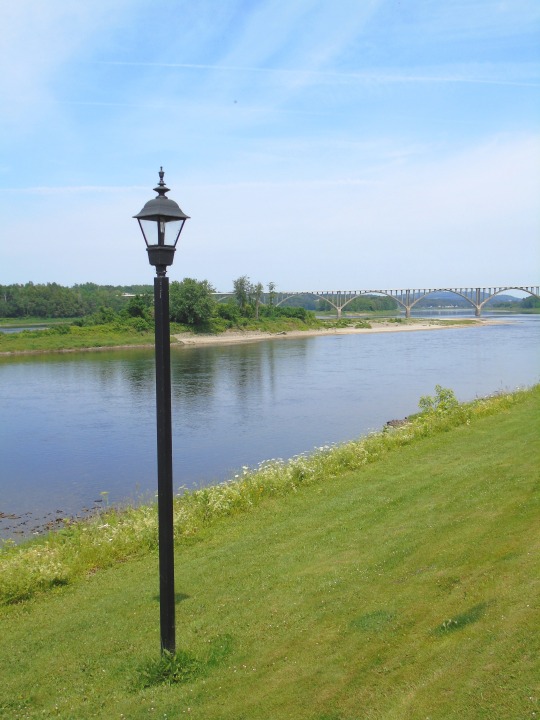
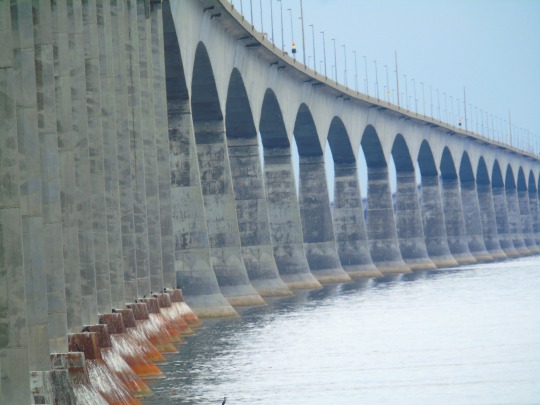
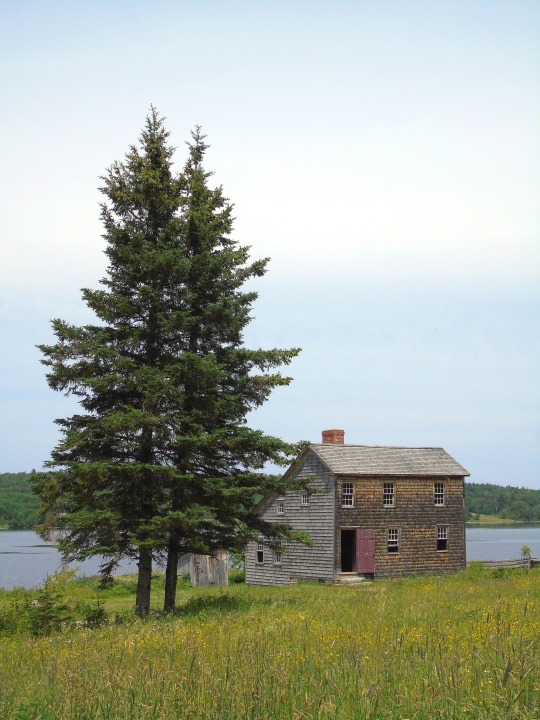















New Brunswick adopted Eastern Standard Time (until 1902) on December 9, 1883.
#Grand Falls#New Brunswick#Eastern Standard Time#9 December 1883#travel#140th anniversary#Canadian history#summer 2015#original photography#landscape#cityscape#tourist attraction#Saint John River#Hartland#Hartland Bridge#Kings Landing Historical Settlement#Shediac#Giant Lobster by Winston Bronnum#Confederation Bridge#Moncton#Petitcodiac River#Cape Jourimain#Atlantic Ocean
0 notes
Text
First Record of the Ocean Sunfish, Mola alexandrini (Ranzani 1839), (Tetraodontiformes: Molidae) from the Coastal Waters of Andhra Pradesh, India

Authored by: P Padmavathi
Abstract
Mola alexandrine, commonly known as bump-head sunfish has been reported for the first time from Andhra Pradesh coastal waters. A detailed morphological description of the specimen is provided, and the morphometric and meristic data are compared with those of the same species reported by earlier workers. Historical records of the family Molidae from Indian waters are summarized and discussed.
Keywords: First record; Mola alexandrine; Morphometrics and meristics; Ocean sunfish
Introduction
The ocean sunfishes belonging to the family Molidae are composed of three genera (Ranzania, Masturus and Mola) with five valid species viz., Ranzania laevis (Pennant 1776), Masturus lanceolatus (Lienard 1840), Mola mola (Linnaeus 1758), Mola tecta (Nyegaard et al. 2017) and Mola alexandrini (Ranzani 1839) [1-4]. Family Molidae is monophyletic among highly derived order Tetraodontiformes [5] and characterized by distinctly-shaped body by the lack of true caudal fin, which is replaced by a broad stiff lobe, a pseudo-caudal fin called clavus [6]. These fishes are known to be active swimmers and opportunistic foragers in the pelagic waters of both temperate and tropical oceans [7-9]. The occurrence of ocean sunfishes is rare from Indian coastal waters [10]. However, the presence of some molds has been reported in new areas [11] and previously known distribution ranges are being expanded [12]. These fishes occupy a unique position in marine food web [13,14]. The consumption of these oddly species has not been attracted the folk’s attention due to their rare occurrence and lack of information on their nutritional aspects. However, the meat of the ocean sunfishes is reported to be delicious in Taiwan and Japan [15].
The bump-head sunfish, Mola alexandrini (Ranzani 1839) is a large pelagic species which claimed a record of world’s heaviest teleost fish with a weight of 2,300 kg with 272 cm TL [16]. However, this fish may grow even larger [17]. Sawai et al. [16] found Mola alexandrini (Ranzani 1839) to be synonymous with Mola ramsayi (Giglioli 1883). The present study reports the first record of M. alexandrini from the coastal waters of Andhra Pradesh, India, and an attempt was made to compare the morphological, morphometric, and meristic characters among the known records of the species. The historical records of the family Molidae from the Indian coastal waters are provided and discussed.
Materials and Methods
One specimen of M. alexandrini was collected as by-catch from trawl catches of Kakinada fishing harbor (16° 58′ 30″ N, 82° 16′ 44″ E), East Godavari district, Andhra Pradesh, India (Figure 1). The fish was caught from commercial trawler operated at a depth range of 20-100m on 11th December 2018. The morphological characters were observed in fresh specimen. Morphometric and meristic details were recorded using the standard methods of Fraser-Brunner [6] and Whitley [18]. The species was identified based on the description given by Fraser-Brunner [6]; Sawai et al. [16]; Yosita et al. [17]; Nyegaard et al. [19]. Morphometric measurements were taken as straight-line distances (±1mm) using a 500 cm tape with 1mm gradation.
They included the total length (TL), a linear distance from the tip of the snout to the distal edge of the clavus; pre-clavus band length (PCBL), the straight distance from the tip of snout to the origin of clavus; total body depth (TBD), a linear length between dorsal fin and anal fin tips; body depth (BD), vertical distance between the dorsal and ventral margin of the body where the height is greatest; eye diameter (ED), the distance between the anterior and posterior edges of the orbit; pre-orbital length (POL), the distance between the tip of snout to the origin of eye orbit; pre-dorsal length (PDL), a straight distance from the tip of the snout to the anterior edge of dorsal fin; pre-pectoral length (PPCL), measured from the tip of snout to the anterior end of the pectoral fin; pre-anal length (PAL), a straight distance from the tip of the snout to the anterior end of the anal fin; height of dorsal fin (DFH), the vertical distance from the base to the tip of the dorsal fin; height of anal fin (AFH), the vertical distance from the base to the tip of the anal fin; and length of pectoral fin (PCFL), measured between its origin to the extreme tip. Meristic characteristics included the counts of fin rays in dorsal, pectoral, and anal fins, and clavus ossicles.
Results
Taxonomic position
• Phylum: Chordata
• Class: Actinopterygii
• Order: Tetraodontiformes Berg, 1940
• Family: Molidae Bonaparte, 1835
• Genus: Mola Koelreuter, 1766
• Species: M. alexandrini (Ranzani 1839).
Description
Body orbicular, deep and laterally compressed; skin thick and leathery; scales rectangular; mouth small and terminal; teeth on both jaws fused and beak-like; eyes small; pair of small nostrils in front of eyes; head bump extends from above the eyes to the base of dorsal fin; chin bump from beneath the lower jaw to anal fin base; gill openings small and oval; dorsal and anal fins opposite and triangle shaped; fins with soft rays and spineless; pelvic and caudal fins absent; caudal fin replaced by broad clavus with round margin; smooth band at the base of clavus between dorsal and anal fins; pectoral fin small rounded. Body gray to silvery white dorsally, dusky white ventrally, dorsal and clavus region with reddish brown tinge; fins bluish black, and many irregular paler spots over the body (Figures 2 & 3). The morphometric and meristic characters of the present specimen along with those of earlier works on M. alexandrini are shown in Table 1.
Discussion
The homogeneity in the morphological characters of Mola has created confusion in the species identification. However, the major distinguishing characters for the identification of Mola species are the presence or absence of head bump, chin bump and smooth band back-fold at the base of clavus; shape of the clavus margin; number of fin rays and ossicles in clavus; and the shape of the body scales [6,16,17,19-22]. The diagnostic characters of M. alexandrini observed in the present study such as the presence of head and chin bumps; smooth band at the base of clavus without a back-fold; rounded clavus; 12 clavus ossicles; scales rectangular on middle region of body and paler spots over the body are in conformity with those observed by the earlier workers [6,16,19].
The historical records of the family Molidae for over 65 years (1953-2018) from Indian coastal waters have been presented in Table 2. Based on the historical data, the distribution of the family Molidae in Indian waters is restricted to four species namely M. mola, M. lanceolatus, R. laveis, and M. alexandrini. Of these, M. mola [23] and M. lanceolatus [24] have been reported from coastal waters of Andhra Pradesh. M. alexandrini was reported in Indian waters with the rare occurrence of two records, one from Chennai, Tamil Nadu by Mohan et al. [21] and the other from Kochi, Kerala by Kishor et al. [20]. Hence, it is evident that the current reporting of M. alexandrini is the 3rd record from India and the first ever report from Andhra Pradesh.
In Indian coastal waters, the ocean sunfishes are considered as vagrant species, with only few sporadic sightings. Since 1990’s, however, there has been a considerable increase in the frequency of molids observed in Indian waters [25-30] (Table 2). The occurrence of M. alexandrini in the study area might be due to the fact that the species which are weak may get drifted to the coastal waters by strong currents or in course of chasing specific plankton/diatoms, as they are opportunistic foragers and selective feeders [3,5,13]. Moreover, in recent times there has been a massive development of fisheries and upgraded fishing vessels extended their trawling operations into deeper waters, catching more varieties of fishes in the study region [31-35]. The present report of the species from Andhra Pradesh coastal waters along central east coast of India would help in creating new awareness and scope for the proper documentation of data on this deficient species from the Indian waters [36-47].
N- Number of individuals; TL- Total length; TW- Total weight
To Know More About Oceanography & Fisheries Open Access Journal Please click on: https://juniperpublishers.com/ofoaj/index.php
For more Open Access Journals in Juniper Publishers please click on: https://juniperpublishers.com/index.php
0 notes
Photo






Olive Branch High School
9710 W. National Rd.
New Carlisle, Ohio
Olive Branch High School was a public high school Bethel Township, Clark County, near New Carlisle, Ohio. In 1873, a brick structure known as "No. 3" was built to house the Olive Branch School, for grades 4 through 8. In 1878, the Legislature of Ohio passed a law authorizing township Boards of Education to establish a school of higher grade than a common school. A decision was quickly made to create Olive Branch High School, but due to lack of funds, the new school wasn't established until October, 1880, when one room of the existing Olive Branch School was put into service for a high school class headed by teacher Robert H. Taylor. Courses taught at the school included Latin, Algebra, Geometry, Science, and others. The first class started with five students, but grew to seven by the time its members graduated from grade 11 in 1883.
In 1884, the school became a four-year institution with the addition of a grade 12, so the pupils who graduated in 1883 came back for another year—with a new teacher, as Robert Taylor left after his third year—and graduated again with the class of 1884. That same year, a Superintendent position was created and filled by Mr. Taylor's brother, W.S. Taylor. In 1886, a second teacher was hired, but the faculty was reduced back down to one teacher the following year. The building was also expanded around this time.
By 1900, the Olive Branch School building was overcrowded and in disrepair. Some of the repairs mandated by the State Inspector were completed that year, and the Bethel Township Board of Education spent the next six years discussing whether to continue repairs or to construct a new building. Construction of a new building was approved in 1907, and bonds were issued to raise the $30,000 needed to build the new school. The new building was completed in 1908, and all the students were moved to it. This structure, designed in the Craftsman style by architect Charles Insco Williams, was the first to be named Olive Branch High School, although it also still housed the lower grades of sub-district
Known locally as the "little round school house," "little round building," or "little round O.B.", this building had a unique circular design with four classrooms that pointed inward to face a central cafeteria and gymnasium. The building was destroyed when a boiler in the basement caught fire on November 10, 1913. Classes were held in a barn until a replacement building was finished in December 1914, at a cost of just under $15,000, for which $7,000 in bonds were issued earlier that year. Built on the same foundation, it was identical to the original building, but had doors added to each classroom so students could easily exit the building in case of fire.
From 1910 to 1916, the school had two teachers. In 1916, a third teacher was added in order to comply with a new state law requiring high schools to have three faculty in order to retain its standing as a 'first-grade' high school. At the time, Olive Branch was one of only two rural schools in the state to retain its standing. A Smith–Hughes agriculture course was added in 1922. In 1928, a new, larger brick building was constructed to house Olive Branch High School on land adjacent to the "little round" school. In 1952, Olive Branch High School closed and its grade 10–12 students enrolled in the newly completed Tecumseh High School, one hundred meters away. The brick building which last housed Olive Branch High School then became Olive Branch Junior High School (grades 7 through 9), and in 1981 became Olive Branch Middle School (grades 6 through 8), before being demolished and replaced by Tecumseh Middle School in 2007.
Meanwhile, in the 1950s and early 1960s, the "little round" building was used for overflow, temporarily housing classes from Tecumseh High School. In 1963, the building was used as an overflow elementary school, and then for art classes. In 1972, it ceased housing classes, and since then the well-maintained building has been used for storage. The building was placed with the National Register of Historic Places on July 23, 2009, and was rededicated at a ceremony in January 2010. Since then, funds have been sought to restore the building as a museum and board office.
0 notes
Photo

Ivan Alexandrovich Ilyin or Il'in (Ива́н Алекса́ндрович Ильи́н, 9 April [O.S. 28 March] 1883 – 21 December 1954) was a Russian jurist, a dogmatic religious and political philosopher, an orator and conservative monarchist. He perceived the February Revolution as a "temporary disorder", and the October Revolution as a "national catastrophe", and actively joined the struggle against the Bolshevik regime.[1] He became a white émigré journalist, a Slavophile and an ideologue of the Russian All-Military Union. As an anti-communist,[2] Ilyin initially defended Hitler but his critique of totalitarianism was not at all appreciated by the Nazi regime. Moreover, in 1934 he refused to accept their orders to spread Nazi propaganda in the Russian Academic Institute and was subsequently removed from his post and banned from all further employment.[3] While Ilyin lost his main source of income, Sergei Rachmaninoff helped him financially to stay in Switzerland. As Ilyin was not allowed to work or to be politically active,[4] he mostly studied aesthetic, ethical and psychological questions.[5]
Ivan Ilyin, often sick, wrote over 40 books and hundreds of articles and pamphlets in Russian and German. Almost all of his works is steeped in religion and related to Russia. Ilyin did not belong to the group of followers of Vladimir Solovyov, who preached worldwide theocracy and with whom the Russian religious and philosophical Renaissance of the early 20th century is usually associated.[1] Ilyin was a firm believer in a strong state and rejected federalism. He called for patriarchal form of rule for Russia, based on Orthodoxy and faith in the tsar (the autocrat, not the tyrant).[6][7][8] Appeals to heroism and moral aristocratism appear throughout Ilyin’s writings.[9] He became the purveyor of the doctrine of Western Russophobia.[10]
Ilyin remained a right Hegelian all his life, exploring the themes of the state, law, power in world history.[11] Ilyin criticized individualism, liberalism, and neutrality,[12] and was an enemy of intellectualism and Western analytic philosophy. The ultranationalist Ilyin was critical of Western-style democracy, emphasizing instead the importance of a strong government in accord with Russia’s autocratic heritage.[13][14] He predicted the collapse of the Soviet state. Ilyin's views on the social structure of Russia had a great influence on post-Soviet intellectuals and politicians, including Aleksandr Solzhenitsyn, and Russian president Vladimir Putin.
https://en.wikipedia.org/wiki/Ivan_Ilyin
0 notes
Text

"Be good, love the Lord, pray for those who do not know Him. What a great grace it is to know God!"
~ St. Josephine Bakhita
Born to a wealthy Sudanese family, she was kidnapped by slave-traders at age 9, and given the name Bakhita (lucky) by them. Sold and resold in the markets at El Obeid and Khartoum, finally purchased in 1883 by Callisto Legnani, Italian consul who planned to free her. She accompanied Legnani to Italy in 1885, and worked as a nanny for the family of Augusto Michieli. She was treated well in Italy and grew to love the country. An adult convert the Christianity, she joined the Church on 9 January 1890, she took the name of Josephine as a symbol of her new life.
She entered the Institute of Canossian Daughters of Charity in Venice, Italy in 1893, taking her vows on 8 December 1896 in Verona, Italy and serving as a Canossian Sister for the next fifty years. Her gentle presence, her warm, amiable voice, and her willingness to help with any menial task were a comfort to the poor and suffering people who came to the door of the Institute. After a biography of her was published in 1930, she became a noted and sought after speaker, raising funds to support missions.
Her feast has been designated the International Day of Prayer to Stop Human Trafficking.
29 notes
·
View notes